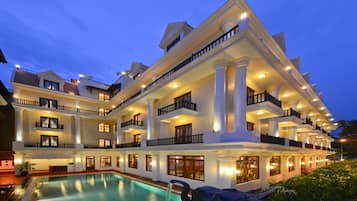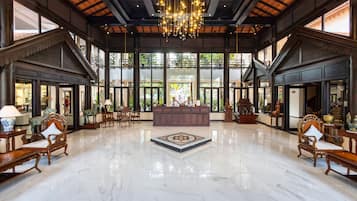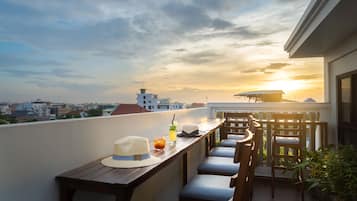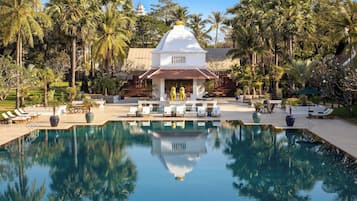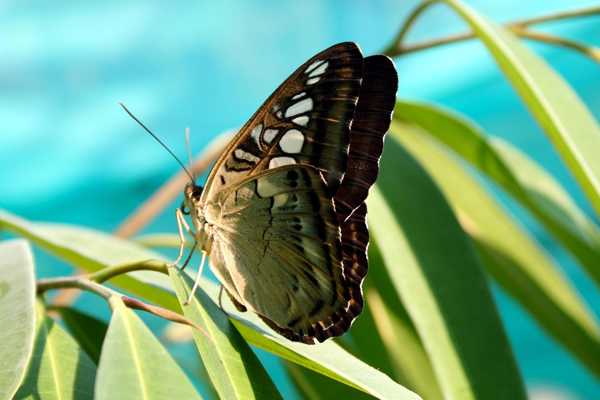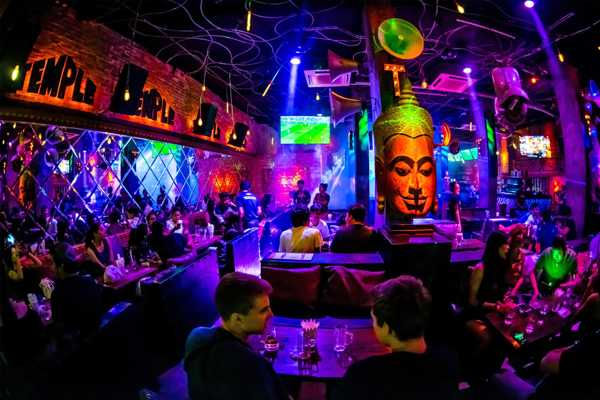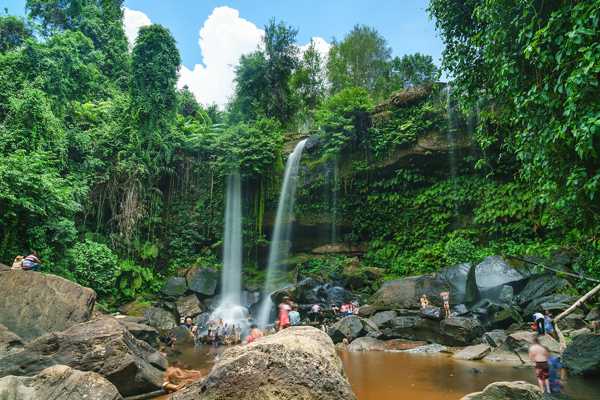The Bayon Temple is one of the more famous, popular and beautiful of the structures in the Angkor Wat Archaeological Park. Situated just to the north of Angkor Wat itself, the temple was once at the centre of the ancient city of Angkor Thom. It's sometimes called Jayavarman's Temple, in honour of the Khmer king who ordered its construction. It's best known for its many towers with gently smiling faces on each side.
There are some 50 towers around the ruined temple, with over 200 faces showing varying degrees of erosion and wear. Each face is 4 metres high and is facing one of the cardinal directions of the compass. They all have the same serene smile, with eyes closed, representing the all-knowing state of inner peace, and perhaps even a state of Nirvana. There are also many complicated and exquisite bas-reliefs around the temple, with scenes depicting land and naval warfare, market scenes and even the construction of the temple itself.
Bayon Temple - one of the highlights of 5 Great Angkor Temples in 3 Days and 10 Best Things to Do in Cambodia (Read all about Siem Reap here)
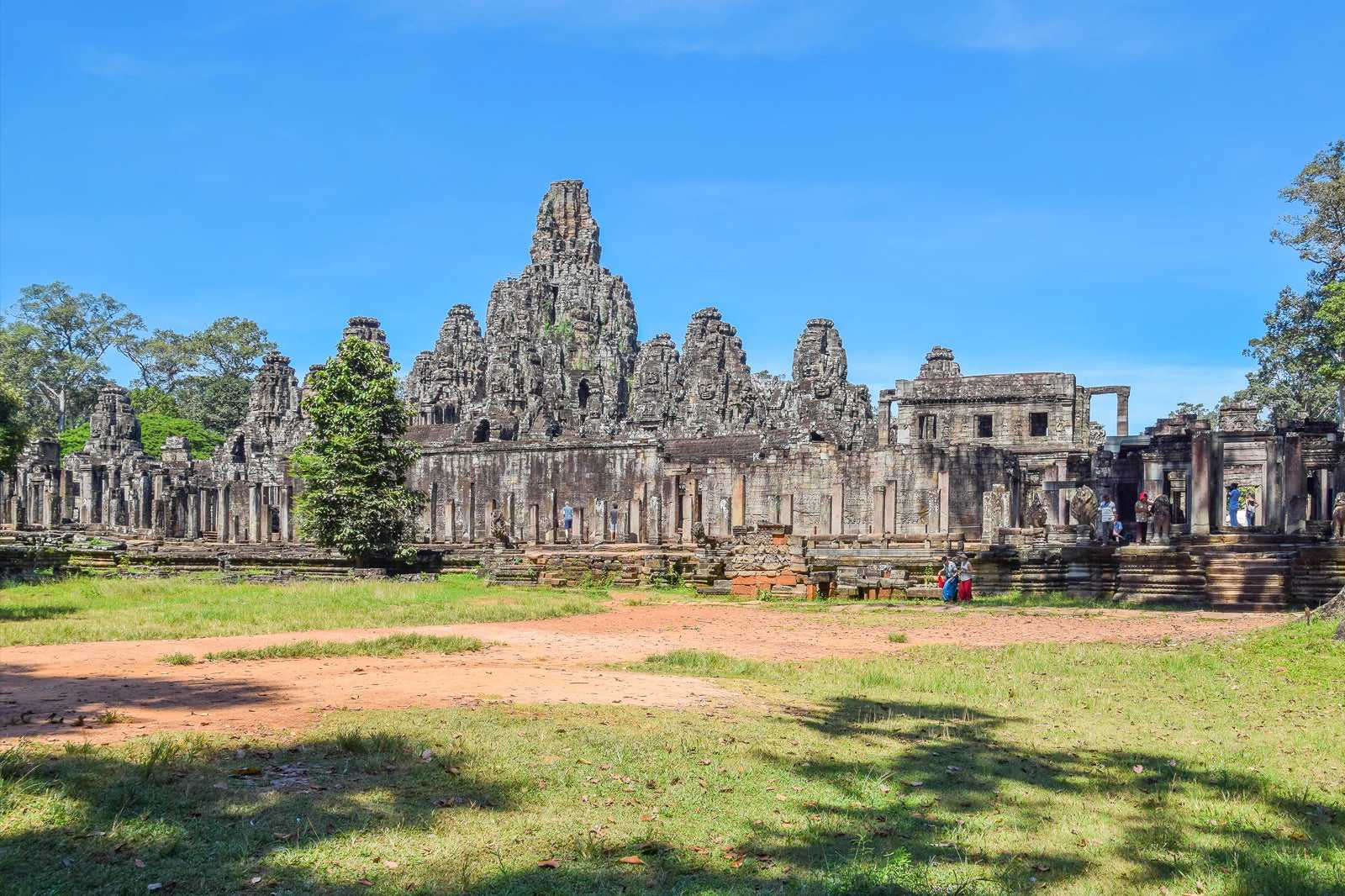
사진 제공: Krzysztof Golik (CC BY-SA 4.0) 수정됨
Exploring Bayon Temple
Exploring Bayon Temple can be quite tough on the knees as the tour involves lots of narrow corridors, steep flights of stairs and towers. Depending on your pace, it takes about 30-40 minutes to see all of it. As one of the most popular structures in the area and a feature of virtually all tours – whether organised or independent – bits of it can get a little crowded. The ruins are big enough that you can always find somewhere cool and quiet to explore, though.
Bayon is rich in decoration, and the bas-reliefs on the exterior walls of the lower level and on the upper level are outstanding. Those on the southern wall are of scenes from a sea battle between the Khmer and the Cham. However, it's not known if they represent the Cham invasion of AD 1177, or a later victorious battle for the Khmer.
There are also interesting and extensive carvings of scenes from everyday life, including market scenes, religious rituals, cockfighting, chess games and childbirth. Of note are the unfinished carvings on some walls, which were probably not completed because of the death of Jayavarman VII.
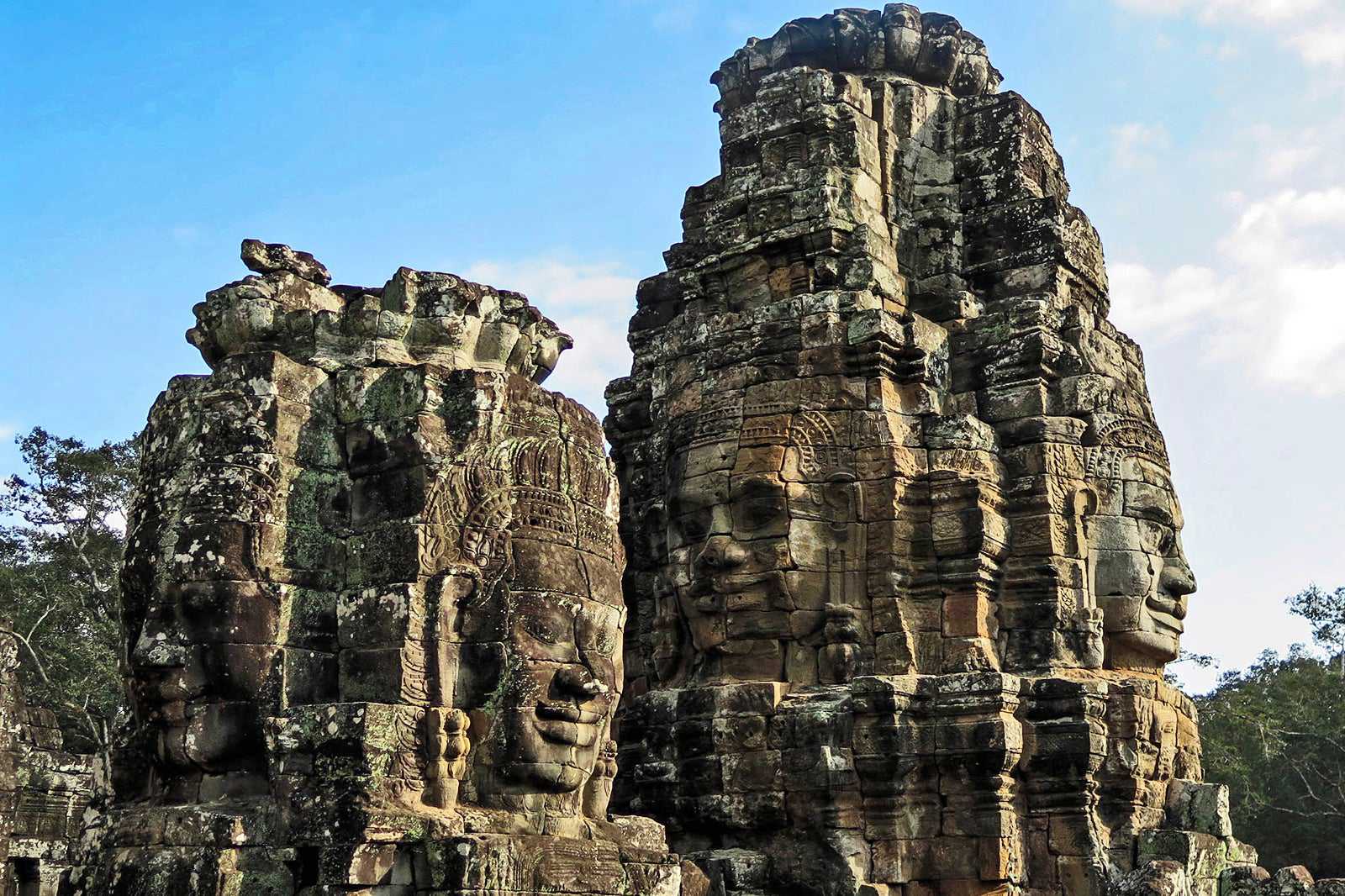
Design of Bayon Temple
When it comes to the many faces around Bayon Temple, there's some debate over who they actually represent. Some scholars think that they are King Jayavarman VII while other theories suggest that they are the face of a Bodhisattva (Buddhism's compassionate and enlightened being) or a combination of Buddha and Jayavarman. Bayon Temple was constructed as Jayavarman VII's state-temple, and it represents the height of his massive building programme.
Bayon underwent several additions and modifications under later kings, and some of the bas-reliefs on the inner walls were carved at a later date under the Hindu king Jayavarman VIII. The terrace to the east of the temple, the libraries, the square corners of the inner gallery and parts of the upper terrace appear to be additions that were not part of the original structure.
Since Bayon Temple was constructed in stages over a span of many years, it appears to be a bit of an architectural jumble. When seen from a distance, it can seem like a rather formless pile of stone, while the interior is a maze of galleries, towers and passageways on 3 different levels.
The best time for photographs is when the sun is rather low, near sunrise and sunset, as this brings out the detail in the bas-reliefs.
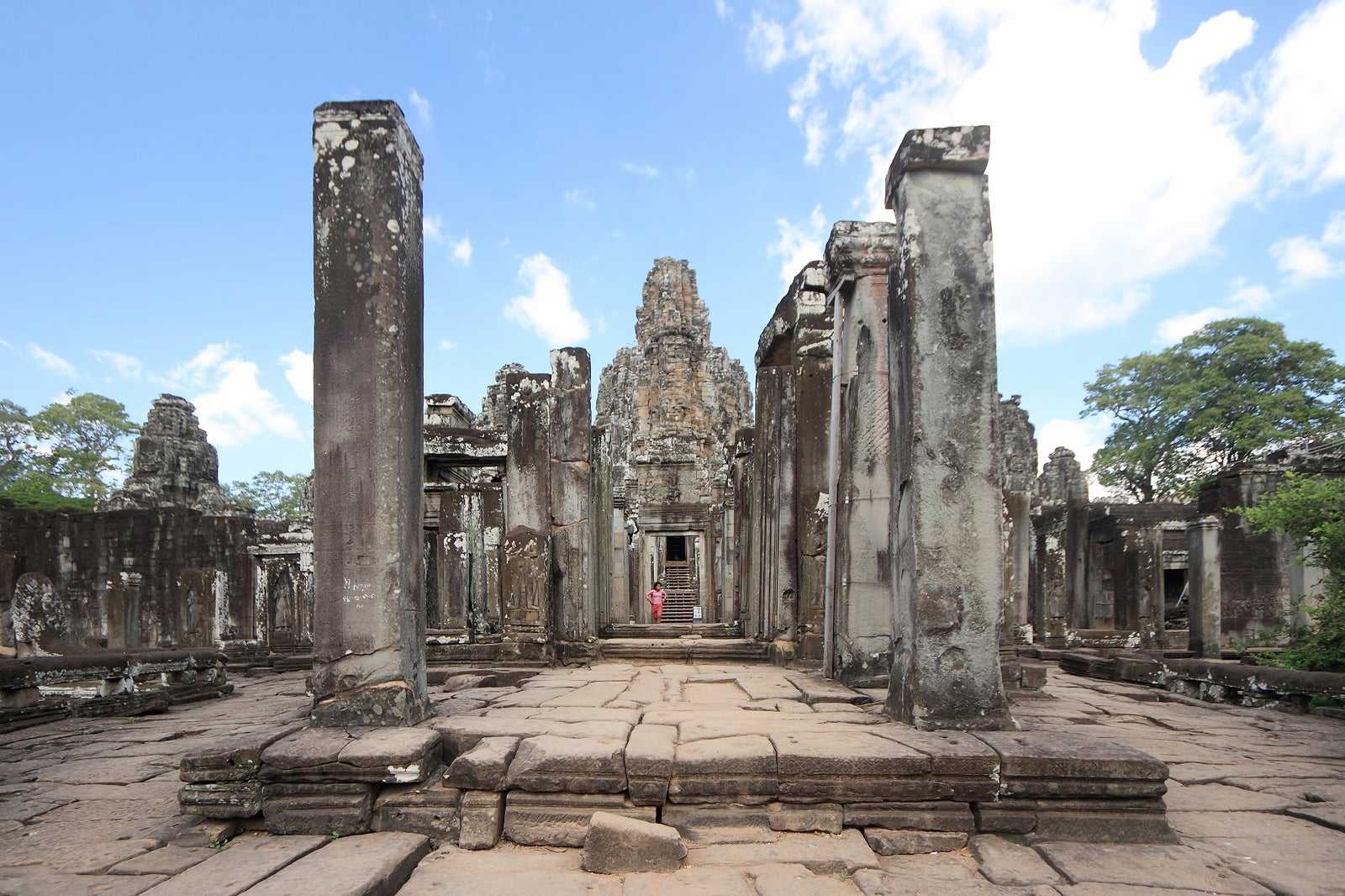
사진 제공: Harald Hoyer (CC BY-SA 2.0) 수정됨
Bayon Temple
주소: Central Angkor Thom, Angkor Archeological Park, Siem Reap, Cambodia




